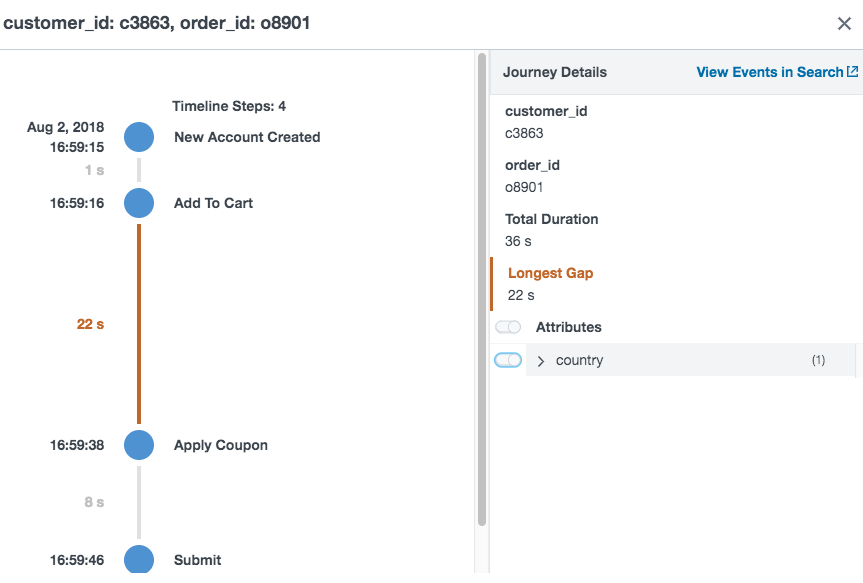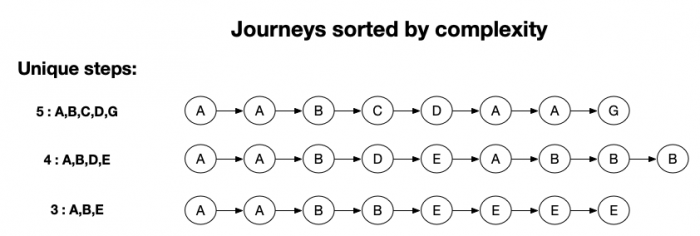 Download topic as PDF
Download topic as PDF
List
To investigate details of an individual Journey, open the Journey Instance view in the List feature. In the Journey Instance view, you can identify the longest gap between steps and review the timeline of the Journey. You can sort Journeys in the list view by Journey duration, start and end time, Correlation ID, and Step sequence.
This image show an example of the Journey Instance view enabled.

Sequence
In SBF, a sequence is a pattern of steps in a Journey. In the list view, you can sort by complexity, repetition, starting, and ending step sequences. Let's take a look at a few examples.
Sort by complexity
Select Complexity to sort Journeys based on the number of unique steps contained in each Journey. In this example, the three Journeys are sorted by most, to least complex step sequences. The first Journey contains five unique steps: A, B, C, D, G, the second Journey contains four unique steps: A,B,D,E, and the third contains threes steps: A,B,E.
Sort by repetition
Select the Repetition view to sort Journeys based on the frequency of immediately recurring steps. In this example, the Journeys are sorted by the Journey with the highest frequency of an immediately recurring step, to the lowest frequency. The first Journey has the highest frequency of step repetitions with three consecutive A steps, and four consecutive E steps.

Sort by starting
Select Starting to view Journeys based on the longest sequence of an immediately recurring step at the beginning of a Journey. In this example, the Journeys are sorted by the longest sequence of an immediately recurring step at the beginning of a Journey, to the shortest sequence. The first Journey starts with step A repeated three times. The second Journey starts with step A repeated twice, and the third Journey doesn't contain any repeating steps at the start of the Journey.
Sort by ending
Select Ending to view Journeys based on the longest sequence of an immediately recurring step at the end of a Journey. In this example, the Journeys are sorted by the longest sequence of an immediately recurring step at the end of a Journey, to the shortest sequence. The first Journey ends with step E repeated four times. The second Journey starts with step B repeated three, and the third Journey doesn't contain any repeating steps at the end of the Journey.

|
PREVIOUS A/B comparison |
NEXT Attributes |
This documentation applies to the following versions of Splunk® Business Flow (Legacy): -Latest-


Feedback submitted, thanks!